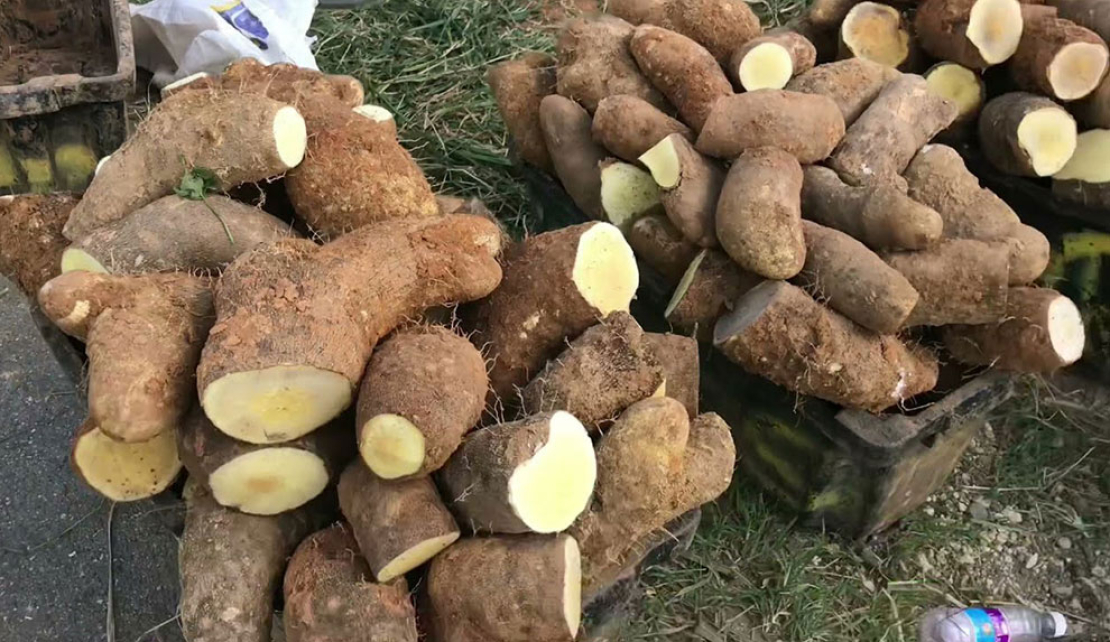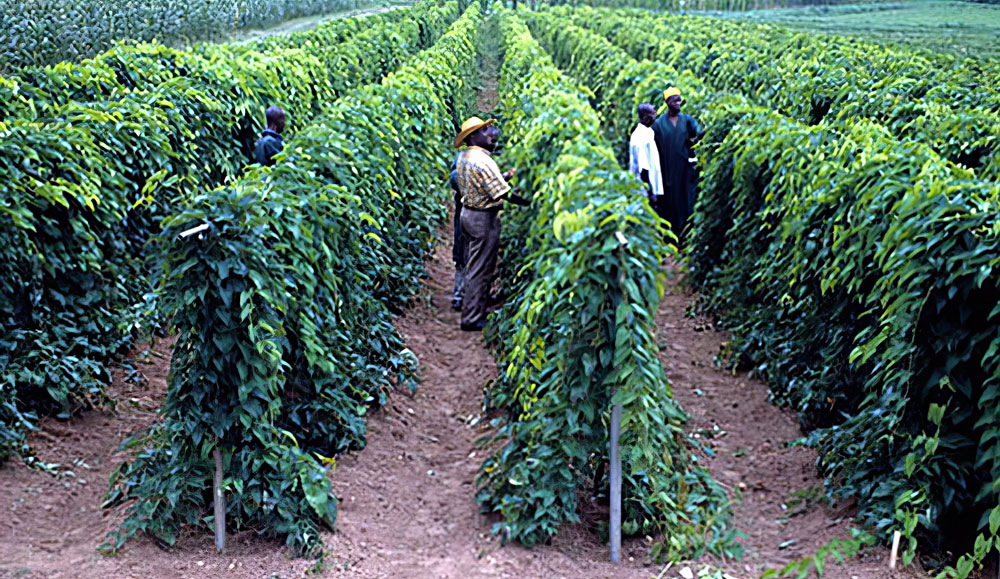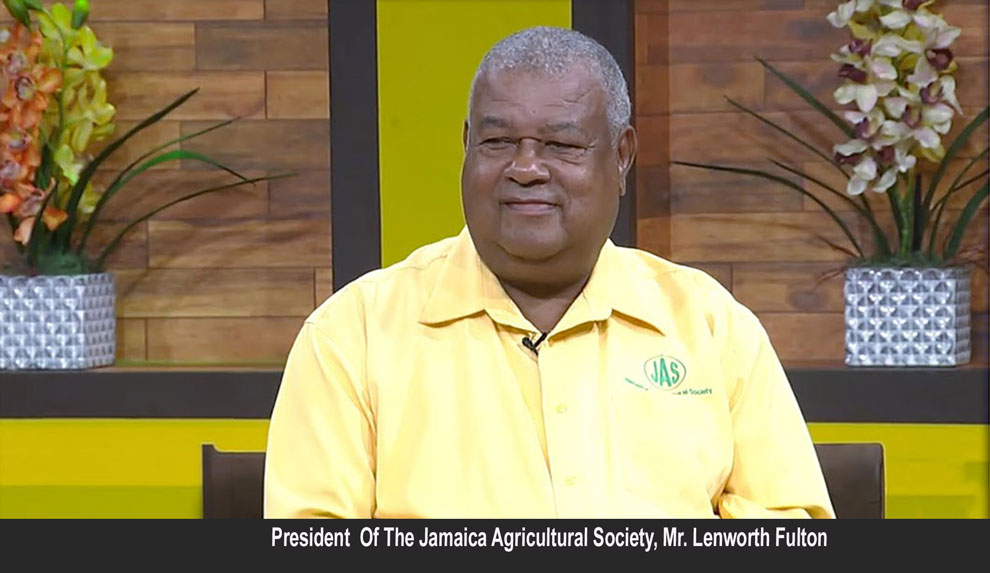JAMAICA'S Yam Production: A Double-Edged Sword says Lenworth Fulton

MONTEGO BAY, Jamaica, March 29, 2024 - Jamaica's position as a leading yam exporter is being threatened by an environmental crisis. The heart of the issue lies in Jamaica’s yam producing areas, where the nation's surge in yam production has led to a significant environmental concern.
The felling of small trees for yam sticks, a traditional method supporting the climbing yam vines, has escalated into a major problem across the island.
Lenworth Fulton, the President of the Jamaica Agricultural Society (JAS), has sounded the alarm on this unsustainable practice. Fulton advocates for a shift towards modernization, suggesting the adoption of trellis systems for yam cultivation.
This method, he argues, not only promises to reduce the cost of production by minimizing the need for traditional yam sticks but also stands to drastically cut down on deforestation, preserving Jamaica's green landscape for future generations.
 While Jamaica celebrated a record yield of 210.8 tonnes of yam last year, the environmental cost of this achievement has become impossible to ignore. Approximately 37-million young trees were cut down to support yam cultivation.
While Jamaica celebrated a record yield of 210.8 tonnes of yam last year, the environmental cost of this achievement has become impossible to ignore. Approximately 37-million young trees were cut down to support yam cultivation.
This practice, though lucrative for rural communities, poses a significant threat to the island's biodiversity and contributes to a larger global crisis of deforestation.
“ While Jamaica celebrated a record yield of 210.8 tonnes of yam last year, the environmental cost of this achievement has become impossible to ignore. Approximately 37-million young trees were cut down to support yam cultivation. ”
The dependency on yam sticks has created a unique economic challenge within the agricultural sector.
As demand has surged, so has the cost of these essential tools, climbing from a modest $40 each to an astonishing $100, excluding transportation. This price hike has directly impacted production costs, placing additional financial burdens on farmers.
A female farmer from Litchfield, Trelawny, shared her plight of spending approximately $550,000 to achieve a yield from 2,000 hills of yam, highlighting the stark reality of the cost pressures faced by local farmers in maintaining their livelihoods.
In response to this growing crisis, Fulton proposes innovative solutions, such as the adoption of artificial trellis systems and reusable plastic rods, aiming to mitigate the environmental impact.
Some farmers in regions like Trelawny and Hanover have already begun experimenting with bamboo as a sustainable alternative.
This shift not only addresses the urgent need for environmental conservation but also signals a broader move towards more sustainable agricultural practices in Jamaica.
As Jamaica stands at the crossroads of economic growth and environmental stewardship, the challenge remains in balancing the two.
The modernization of yam cultivation practices presents a hopeful path forward, potentially setting a precedent for other agricultural sectors. With collaborative efforts from government agencies, environmental watchdogs, and the farming community, Jamaica can pave the way for a future where agriculture thrives without compromising the health of the planet.
Embracing Change for a Sustainable Future The dilemma facing Jamaica’s yam industry underscores a larger, global conversation about the intersection of agriculture and environmentalism.
The dilemma facing Jamaica’s yam industry underscores a larger, global conversation about the intersection of agriculture and environmentalism.
The country's struggle with deforestation due to yam stick production serves as a poignant reminder of the broader challenges of maintaining sustainable growth.
However, Jamaica's proactive steps towards modernization and sustainability in yam cultivation could very well serve as a beacon of hope and a model for similar agricultural practices worldwide.
Community and Government: Partners in Progress
The success of transitioning to more sustainable agricultural practices hinges on the collective effort of the entire community, including farmers, environmental advocates, and governmental bodies.
The Jamaican government, along with environmental agencies like NEPA, play a crucial role in facilitating this transition through policy support, funding for sustainable farming initiatives, and education on the importance of environmental stewardship.
By fostering a collaborative environment, Jamaica can ensure the long-term viability of its agricultural sector while protecting its natural resources.
As we look towards the future, the vision for Jamaica’s agricultural sector is one of harmony between economic prosperity and environmental preservation. The journey towards sustainability is complex and fraught with challenges.
Yet, with innovation, community involvement, and supportive governance, Jamaica is poised to navigate these waters successfully. The transition to sustainable yam cultivation is not just about saving trees; it’s about safeguarding Jamaica’s green legacy for generations to come, ensuring that the island remains a lush, vibrant paradise amidst the challenges of the 21st century.
This journey towards a more sustainable and environmentally friendly agricultural practice in Jamaica reflects a broader commitment to the planet's health and future.
It's a testament to the resilience and innovation inherent within the Jamaican people and their leadership, setting an example for the global community on balancing economic needs with ecological responsibility.
-30-

 Ar
Ar  En
En